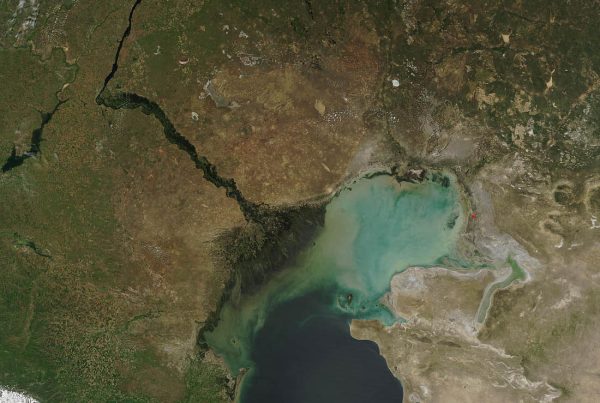
The former Soviet Union is so vast that it holds enormous natural wonders unknown to many people around the world. One of these is the Caspian Depression, owner of the title of the largest enclosed body of water on the planet, this low-lying flatland region encompasses the northern part of the Caspian Sea. Whilst the Caspian sea is one of the lowest bodies of water on earth, at a depth of 28 metres below sea level, there are many places in the Caspian Depression which are even lower, with the lowest point being 132 metres below sea level.
According to many geologists, both the Caspian Sea and the depression were formed by tectonic forces and the depression became separated from the open ocean in ancient times to form an enormous salt lake. In centuries gone by, a part of the famous Silk Road ran through the region. During the rule of Peter the Great in the 18th Century, Fedor Soimonov, hydrographer and pioneering explorer of the Caspian Sea charted the until then little known body of water. Soimonov drew a set of four maps and wrote the ‘Pilot of the Caspian Sea’, the first report and modern maps of the Caspian region.
Shared by both Kazakhstan and the Russian Federation, a large part of Europe’s only Buddhist republic (the Russian Republic of Kalmykia) is located here. The region is home to two large cities, the Russian city of Astrakhan and the Kazakhstani city of Atyrau. Two mighty Russian rivers called the Volga and the Ural also flow through the depression and into the Caspian sea. Whilst the deltas of the Volga and Ural rivers are mostly wetlands, the Caspian Depression is mostly semi-arid desert due to only a tiny portion of the region being irrigated receiving less than 300mm of annual rain.
Covering around 77,220 square miles or 200,000 square kilometers, the depression is one of the largest flat land areas in the vast expanse of Central Asia. Deep underground, it also holds an abundance of very oil and gas reserves, consequently, oil and gas pipelines are a common feature of the landscape here. Large amounts of salt are also extracted from here.





